With the addition of quail to my backyard poultry collection recently, I found that they are particularly messy and that keeping the water clean was a constant challenge. This challenge inspired me to make some poultry nipple waterers (PNW) for them. It’s not always easy to ensure a clean supply of water to chickens (or other poultry) with traditional waterers, even if the supply is changed several times daily. Chickens foul the water with droppings, dirt and bedding, but with a few inexpensive items and the following DIY instructions, clean water is always just a tap away.
We know that access to clean, fresh water is vital to chickens’ health as well as their egg production. Depriving chickens of water for even a few hours can halt egg production for weeks. Self-contained watering systems have been used by the commercial poultry industry for years to eliminate the problems inherent to traditional waterers. Chickens simply tap the end of the nipple to activate the release of water from the container directly into their mouths.
PNW are inexpensive, simple to make and boast certain benefits over traditional waterers:
- the water is always clean and cleaner water means less exposure to diseases like coccidiosis
- can be kept inside the coop without spillage concerns (wet bedding creates an environment that fosters diseases)
- occupy no floor space, freeing up valuable square footage
- facilitate drinking in scissor-beaked chickens
The major limitation of homemade poultry nipple waterers is that they can freeze in cold temperatures, necessitating the addition of a heating device or the use of traditional waterers in the winter, which are easily kept liquid using a DIY cookie tin water heater.
PNW can be made from a variety of containers from water bottles to 5 gallon buckets, PVC pipes to plastic juice bottles. Poultry nipples are available online from a wide variety of sources, very inexpensively.
SUPPLIES & ASSEMBLY INSTRUCTIONS
- a plastic bottle, bucket or container (tops to buckets are optional)
- stainless steel, screw-in poultry nipple (1 for every 2-3 birds)
- 5/16″ drill bit for thin plastic such as water bottles or 11/32″ bit for thick plastics such as 5 gallon buckets
- silicone sealant (aquarium safe)
- string, wire, etc. for hanging
Using a drill on low RPMs with a 5/6″ bit, make a hole in the cap or bottom of the container
Apply silicone sealant around the hole.
Screw the poultry nipple into the hole.
Install a hanger. I drilled holes near the top of the PNW and threaded floral wire through both sides. Important note: Container must have a small hole drilled at the top of the container to allow air in, otherwise the unit will not work. The hangar holes shown below serve that purpose.
There is no training necessary when employing PNWs with young chicks, but there may be with older chickens who are accustomed to traditional waterers. Re-training should only be done in cooler temperatures as there is a learning curve involved.
PN training involves putting away all traditional waterers and showing the chickens how it works by tapping the PN with a finger. Their attention is drawn to the water droplet and as soon as one investigates and tests it, others follow. More training tricks for reluctant chickens, here.
Kathy Shea Mormino
Affectionately known internationally as The Chicken Chick®, Kathy Shea Mormino shares a fun-loving, informative style to raising backyard chickens. …Read on


shop my SPONSORS
With the addition of quail to my backyard poultry collection recently, I found that they are particularly messy and that keeping the water clean was a constant challenge. This challenge inspired me to make some poultry nipple waterers (PNW) for them. It’s not always easy to ensure a clean supply of water to chickens (or other poultry) with traditional waterers, even if the supply is changed several times daily. Chickens foul the water with droppings, dirt and bedding, but with a few inexpensive items and the following DIY instructions, clean water is always just a tap away.
We know that access to clean, fresh water is vital to chickens’ health as well as their egg production. Depriving chickens of water for even a few hours can halt egg production for weeks. Self-contained watering systems have been used by the commercial poultry industry for years to eliminate the problems inherent to traditional waterers. Chickens simply tap the end of the nipple to activate the release of water from the container directly into their mouths.
PNW are inexpensive, simple to make and boast certain benefits over traditional waterers:
- the water is always clean and cleaner water means less exposure to diseases like coccidiosis
- can be kept inside the coop without spillage concerns (wet bedding creates an environment that fosters diseases)
- occupy no floor space, freeing up valuable square footage
- facilitate drinking in scissor-beaked chickens
The major limitation of homemade poultry nipple waterers is that they can freeze in cold temperatures, necessitating the addition of a heating device or the use of traditional waterers in the winter, which are easily kept liquid using a DIY cookie tin water heater.
PNW can be made from a variety of containers from water bottles to 5 gallon buckets, PVC pipes to plastic juice bottles. Poultry nipples are available online from a wide variety of sources, very inexpensively.
SUPPLIES & ASSEMBLY INSTRUCTIONS
- a plastic bottle, bucket or container (tops to buckets are optional)
- stainless steel, screw-in poultry nipple (1 for every 2-3 birds)
- 5/16″ drill bit for thin plastic such as water bottles or 11/32″ bit for thick plastics such as 5 gallon buckets
- silicone sealant (aquarium safe)
- string, wire, etc. for hanging
Using a drill on low RPMs with a 5/6″ bit, make a hole in the cap or bottom of the container
Apply silicone sealant around the hole.
Screw the poultry nipple into the hole.
Install a hanger. I drilled holes near the top of the PNW and threaded floral wire through both sides. Important note: Container must have a small hole drilled at the top of the container to allow air in, otherwise the unit will not work. The hangar holes shown below serve that purpose.
There is no training necessary when employing PNWs with young chicks, but there may be with older chickens who are accustomed to traditional waterers. Re-training should only be done in cooler temperatures as there is a learning curve involved.
PN training involves putting away all traditional waterers and showing the chickens how it works by tapping the PN with a finger. Their attention is drawn to the water droplet and as soon as one investigates and tests it, others follow. More training tricks for reluctant chickens, here.



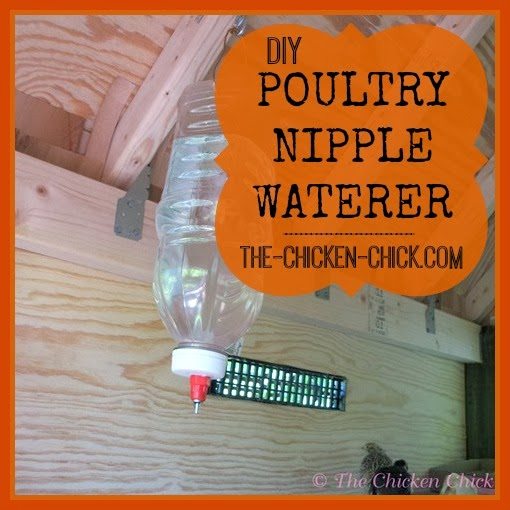
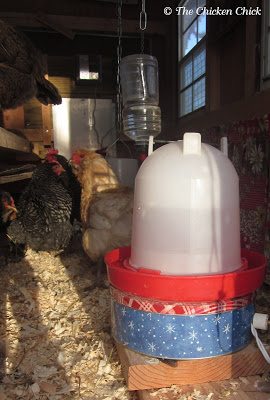
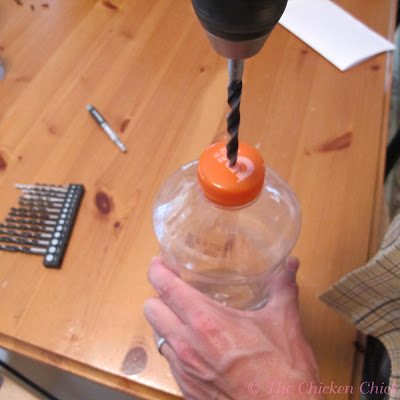
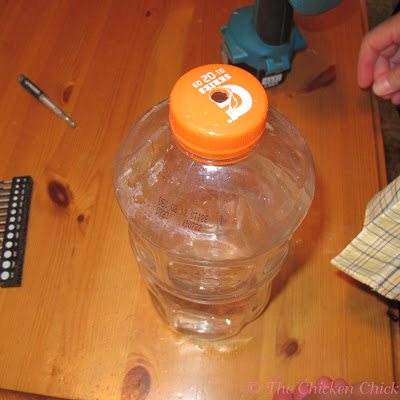
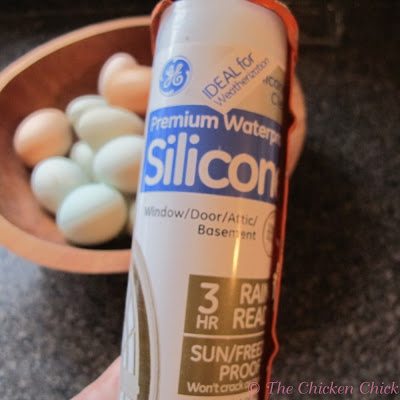
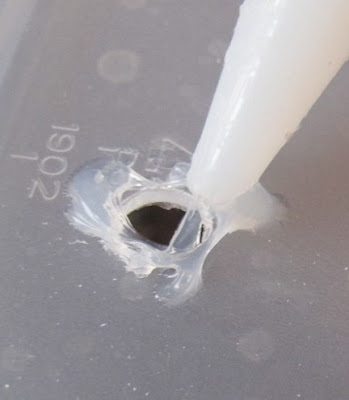
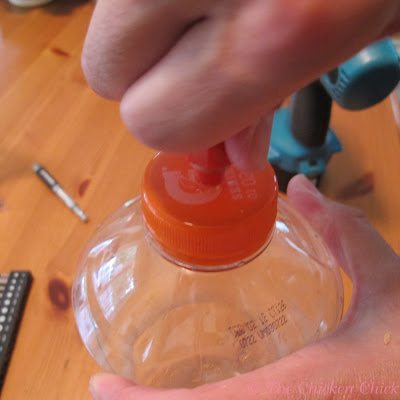
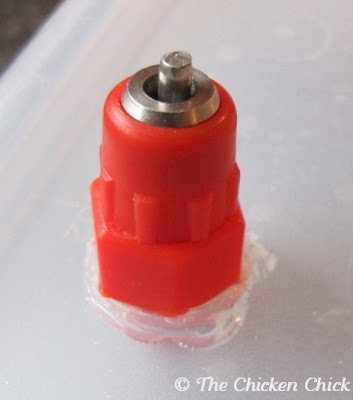
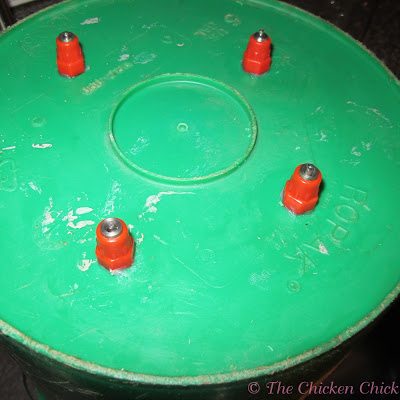
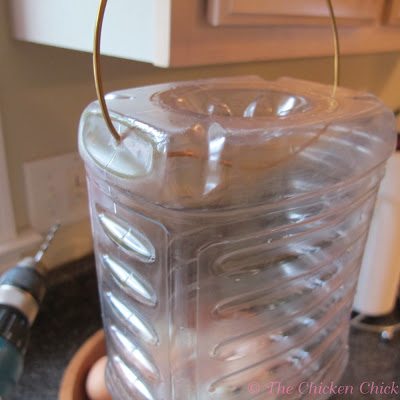
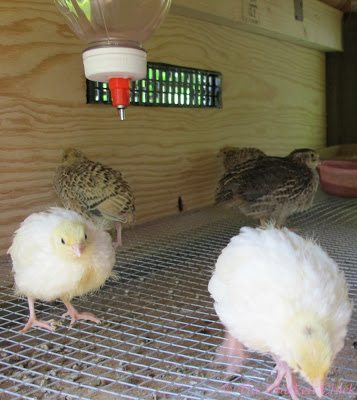
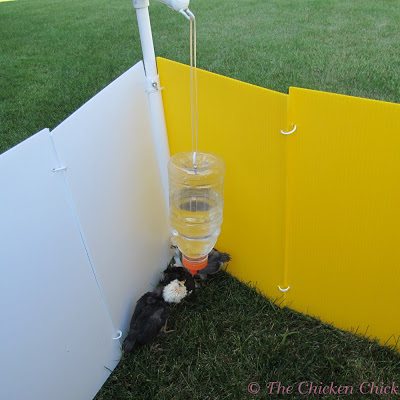
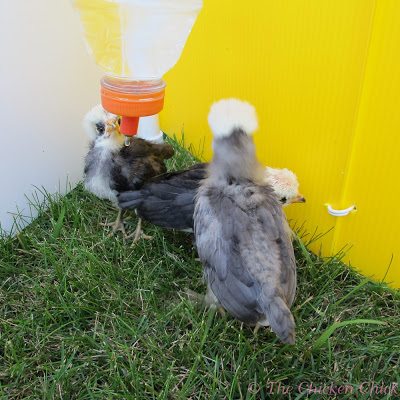
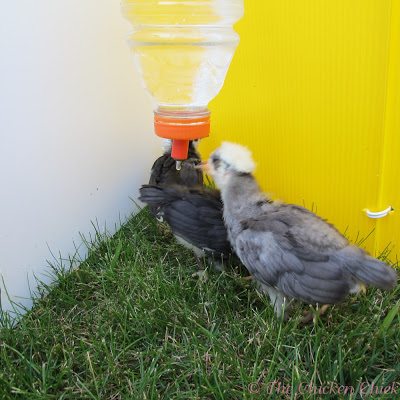
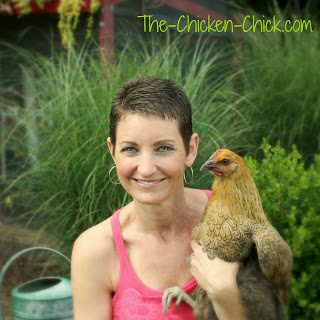






















Ps does anyone have a photo of how you attach the rubber band for training?
I got the brite ta chicken waterer because I only have two hens, and they are free range. They've both nibbled the nipple once or twice but were still drinking from the water trays, it's been two days so we're taking the lunge and removing the water trays tomorrow. Fingers crossed!!!!
Thanks for this info, cause I need to change to something different, and was thinking of these but wasn't sure. Now the only thing to do is order some today! Thank you so much for all the information that you provide for us.
I am not sure I would use that Silicon glue; plumbers tape might be safer and I think there is a liquid plumbers tape as well. Can you spot the differences: https://www.facebook.com/FreeItem/photos/a.182858641890869.1073741826.181302355379831/270578179785581/?type=1&theater
Everything is thawing today, including the snow on the roof of my coop. I discovered that there was a leak in the roof. The pine shaving litter was wet. I was using a metal rake to clean it out and found myself getting shocked! electrocuted! I use a cookie tin heater to keep the waterer from freezing. It was apparently shorting out or something. I unplugged it. I will take it apart and find out what happened the ground wire.